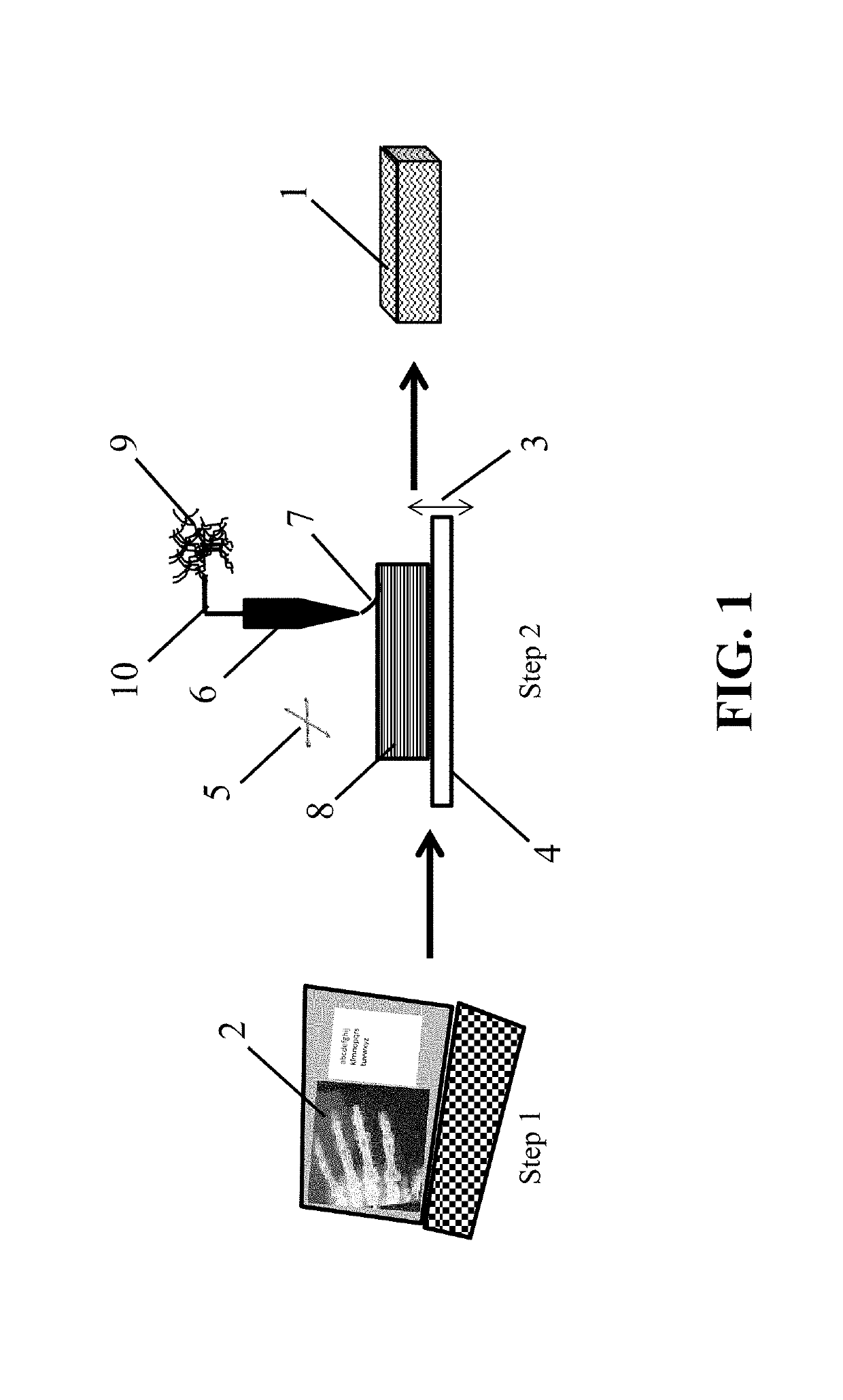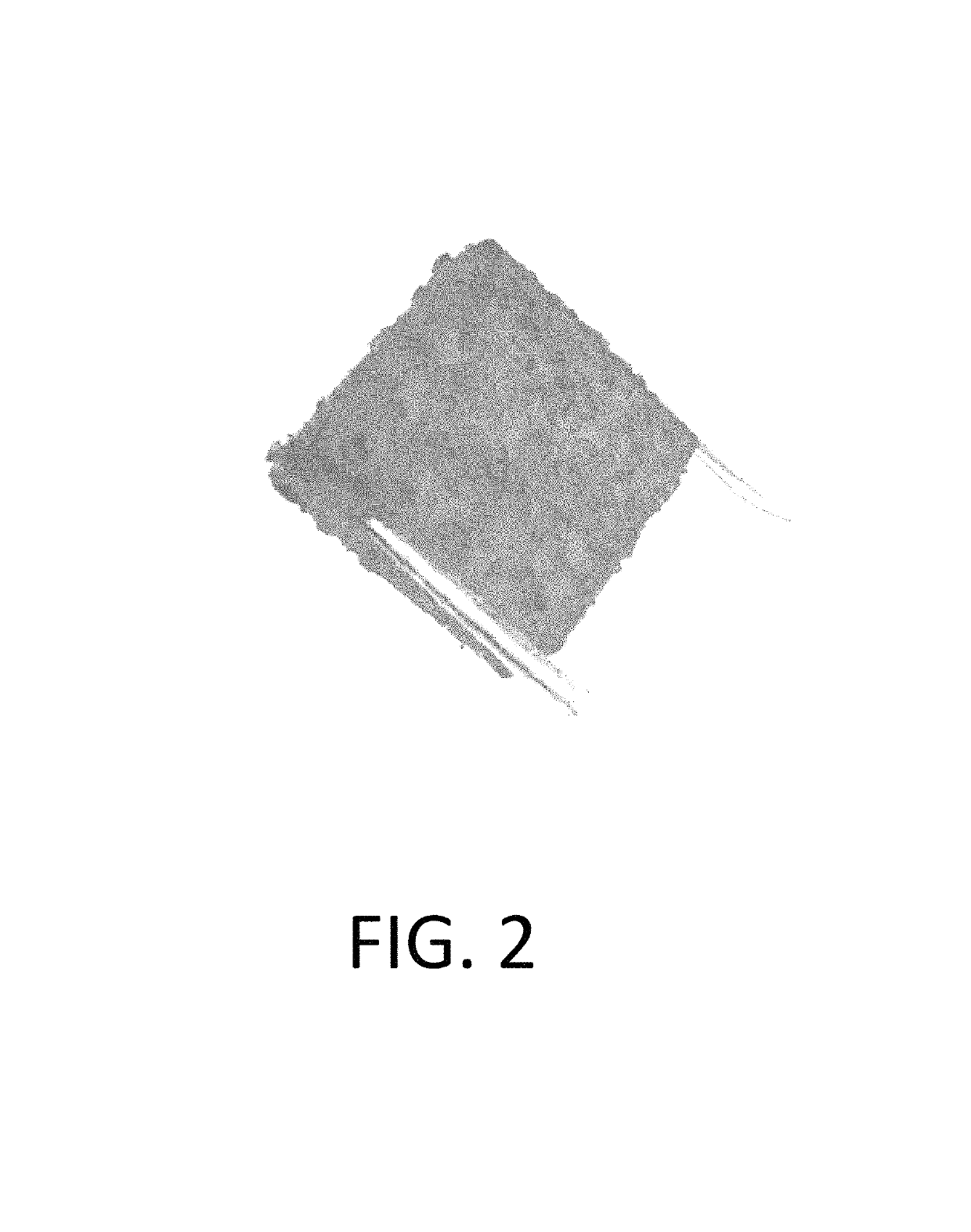Crosslinkable 3D printed biomaterial-based implants and methods of manufacture thereof
a biomaterial and 3d printing technology, applied in the field of 3d printing biomaterial implants and crosslinkable three-dimensional (3d) printed biomaterial implants, can solve the problems of limited use of biomaterials such as allograft tissue in 3d printers, and achieve the effect of limiting or eliminating degradation of the inherent physical properties and biological activity
- Summary
- Abstract
- Description
- Claims
- Application Information
AI Technical Summary
Benefits of technology
Problems solved by technology
Method used
Image
Examples
example 1
Clinical Applications for Crosslinkable Biomaterial-Based Implants
[0060]The following examples are clinical applications and uses for the articles of the present invention.
[0061]Use as a Highly Cohesive Biomaterial-Based Putty: A bioresorbable, and biocompatible putty can be formed by combining biomaterial material (such as bone or cartilage) with a crosslinkable material (e.g., UV curable). The mixture of biomaterial and crosslinkable material can be combined with other additives, growth factors, binders or combination thereof to tailor the putty to the desired physical characteristics. This mixture putty material would then allow intraoperative curing of the putty pre- or post-implantation within a patient (via various crosslinking methods, such as atmospheric oxidation or UV exposure). This provides additional putty cohesion to allow aggressive implantation site irrigation with putty migration.
[0062]Use as Osteoconductive, Osteoinductive Scaffolding: Porous blocks of bone-based m...
example 2
[0065]Preparation of 3D Printed, Crosslinked Bone-Based Implants
[0066]A section of human cortical bone was ground into powder of about 212-850 μm diameter. The bone powder was then demineralized following a modified version of the demineralization steps described in U.S. Pat. No. 5,314,476, which is incorporated in its entirety by reference. Briefly, the powder was stirred in 0.6 N HCl (about 15 mL / g of bone). The acid mixture was stirred for two hours at about room temperature. Following decanting of the acid, the powder was covered and rinsed two times with water. The water for each rinse was replaced at about ten-minute intervals. Following decanting of the final water rinse, the demineralized bone powder was covered with about 0.1 M sodium phosphate and soaked at about room temperature until the pH of the solution was greater than about 6.8.
[0067]Poly(caprolactone fumarate) (PCLF) was prepared as described in Wang, S. et al., Biomaterials, 27, pp. 832-841 (2006). The PCLF (about...
example 3
[0069]Osteoinductivity of 3D Printed, Crosslinked Bone-Based Implants
[0070]To assess the biocompatibility and osteoinductivity of the 3D printed implants, the sample prepared as described in Example 2 was evaluated for osteinductive potential using a standardized athymic nude rat model [Edwards J T et al., Clinical Orthopedics and Related Research, 357, pp. 219-228 (1998)]. The 3D printed implant was implanted into a nude athymic rat for a 28-day implant period. Two intramuscular implant sites in the biceps femoris muscles were used. In the course of the study, no abnormal clinical signs were noted. Elements of new bone formation were observed in each of the implant sites. As the samples met the histological criteria for evidence of osteoinduction, the material demonstrated osteinduction potential in the in vivo assay.
PUM
| Property | Measurement | Unit |
|---|---|---|
| width | aaaaa | aaaaa |
| length | aaaaa | aaaaa |
| thickness | aaaaa | aaaaa |
Abstract
Description
Claims
Application Information
 Login to View More
Login to View More - R&D
- Intellectual Property
- Life Sciences
- Materials
- Tech Scout
- Unparalleled Data Quality
- Higher Quality Content
- 60% Fewer Hallucinations
Browse by: Latest US Patents, China's latest patents, Technical Efficacy Thesaurus, Application Domain, Technology Topic, Popular Technical Reports.
© 2025 PatSnap. All rights reserved.Legal|Privacy policy|Modern Slavery Act Transparency Statement|Sitemap|About US| Contact US: help@patsnap.com


